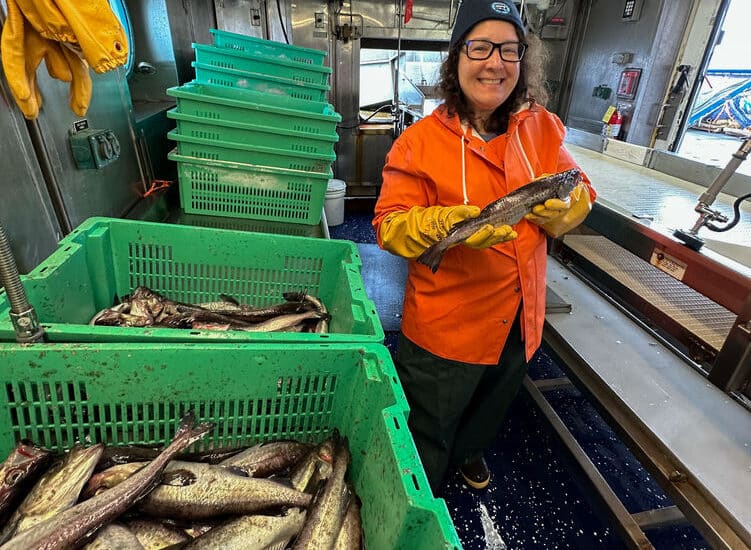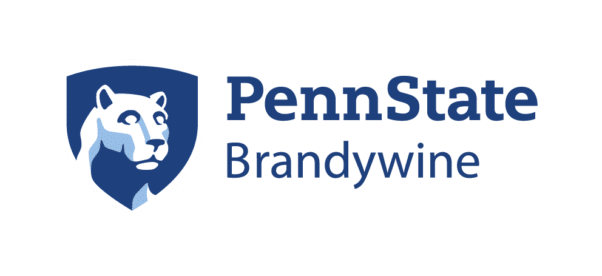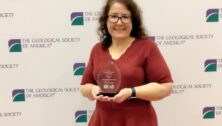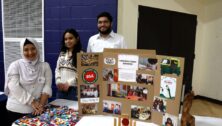Teacher at Sea program Sends Brandywine Geology Professor Trawling for Data

Laura Guertin, distinguished professor of Earth science at Penn State Brandywine, celebrated National Ocean Month in June for two weeks aboard a research vessel in the Gulf of Alaska.
Guertin joined the expedition through the National Oceanic and Atmospheric Administration (NOAA) Teacher at Sea program.
The Teacher at Sea program provides teachers with the opportunity to gain first-hand experience participating in science at sea.
The educators come away with a deeper understanding gained by working alongside scientists studying the marine environment. They can share that with the classroom and the community.
This was Guertin’s second voyage through the program. It was her third sea-bound research experience since she joined Penn State Brandywine in 2001.
In 2014, she was aboard the NOAA ship Thomas Jefferson for a hydrographic survey in the Atlantic Ocean.
This most recent mission aboard the NOAA ship Oscar Dyson was to assess the population and distribution of walleye pollock in the Gulf of Alaska, collecting data to determine catch allocation and maintain sustainable fisheries.
Researchers gathered data through both acoustic surveying and using trawl nets to collect the fish and bring them on board for examination.
Guertin was on daily 12-hour shifts spent in the fisheries lab, where the pollock were sorted, measured, and weighed.
“The highlight for me was just learning something new,” Guertin said. “I loved learning new things that I can then pass on and share with the students in my classes at Brandywine. That’s really important because I can’t take them to the Gulf of Alaska, but I can bring the Gulf of Alaska to them. I can talk from my photos and my experiences and really make it an authentic narrative about what’s going on, and this is the research NOAA’s doing. For me, it’s an amazing teaching experience to be able to bring that in.”
Guertin teaches two different oceanography courses at Penn State Brandywine.
Guertin said learning about fish anatomy was a different experience, as her training is in geology.
“I work with rocks and sand, things that don’t bleed or breathe,” she said, explaining that just figuring out how to hold a live fish was a new skill she had to learn quickly.
In addition to the long shifts of hard work, sailing in the Gulf of Alaska included high winds, rainstorms, cold temperatures, and rough seas.
But, she said, the experience is an important reminder of the process of science and how data are gathered.
Guertin has received honors for both her research and innovative methods for teaching science to undergraduate students. In 2022, Penn State named her a distinguished professor, and the American Association for the Advancement of Science elected her as a fellow.
Read her entire story at Penn State Brandywine.
Connect With Your Community
Subscribe to stay informed!
"*" indicates required fields



































![95000-1023_ACJ_BannerAd[1]](https://vista.today/wp-content/uploads/2023/03/95000-1023_ACJ_BannerAd1.jpg)













